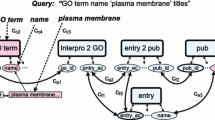Abstract. The rapid growth of the Internet and support for interoperability protocols has increased the number of Web accessible sources, WebSources. Current wrapper mediator architectures need to be extended with a wrapper cost model (WCM) for WebSources that can estimate the response time (delays) to access sources as well as other relevant statistics. In this paper, we present a Web prediction tool (WebPT), a tool that is based on learning using query feedback from WebSources. The WebPT uses dimensions time of day, day, and quantity of data, to learn response times from a particular WebSource, and to predict the expected response time (delay) for some query. Experiment data was collected from several sources, and those dimensions that were significant in estimating the response time were determined. We then trained the WebPT on the collected data, to use the three dimensions mentioned above, and to predict the response time, as well as a confidence in the prediction. We describe the WebPT learning algorithms, and report on the WebPT learning for WebSources. Our research shows that we can improve the quality of learning by tuning the WebPT features, e.g., training the WebPT using a logarithm of the input training data; including significant dimensions in the WebPT; or changing the ordering of dimensions. A comparison of the WebPT with more traditional neural network (NN) learning has been performed, and we briefly report on the comparison. We then demonstrate how the WebPT prediction of delay may be used by a scrambling enabled optimizer. A scrambling algorithm identifies some critical points of delay, where it makes a decision to scramble (modify) a plan, to attempt to hide the expected delay by computing some other part of the plan that is unaffected by the delay. We explore the space of real delay at a WebSource, versus the WebPT prediction of this delay, with respect to critical points of delay in specific plans. We identify those cases where WebPT overestimation or underestimation of the real delay results in a penalty in the scrambling enabled optimizer, and those cases where there is no penalty. Using the experimental data and WebPT learning, we test how good the WebPT is in minimizing these penalties.
Similar content being viewed by others
Author information
Authors and Affiliations
Additional information
Received June 22, 1999 / Accepted December 24, 1999
Rights and permissions
About this article
Cite this article
Gruser, JR., Raschid, L., Zadorozhny, V. et al. Learning response time for WebSources using query feedback and application in query optimization. The VLDB Journal 9, 18–37 (2000). https://doi.org/10.1007/s007780050081
Issue Date:
DOI: https://doi.org/10.1007/s007780050081




